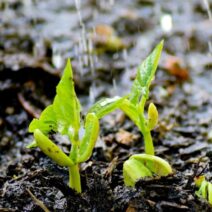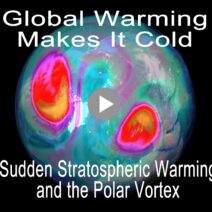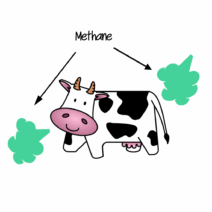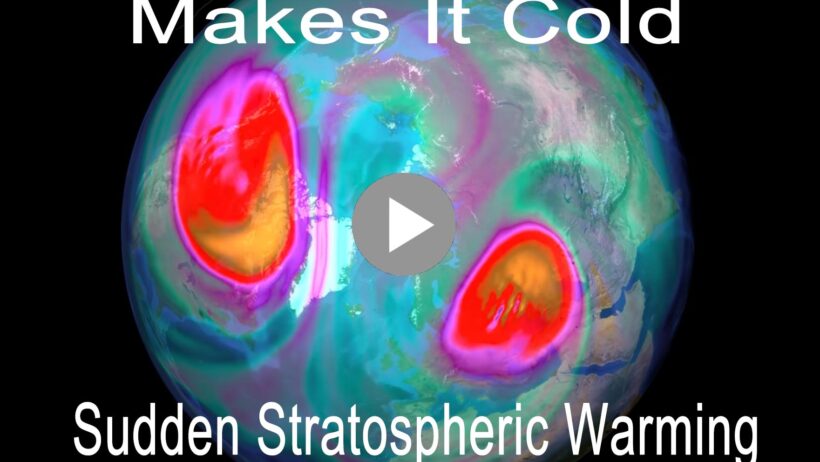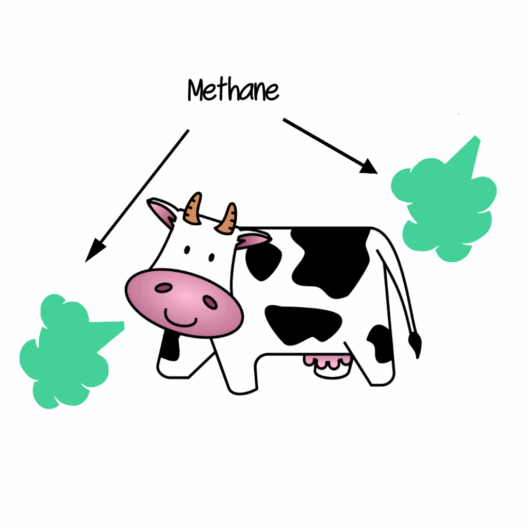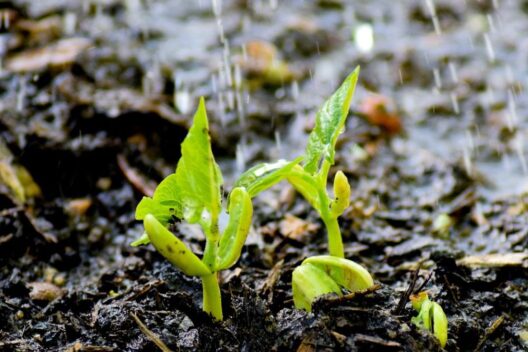The polar vortex is a meteorological phenomenon that tends to captivate both scientists and laypersons alike, particularly when it manifests in extreme cold snaps across regions unaccustomed to such frigid conditions. The term refers to a large area of low pressure and cold air surrounding the Earth’s poles. While it’s a natural phenomenon, recent research indicates a profound connection between the polar vortex and global warming, which necessitates a closer examination of this intricate relationship.
Understanding the polar vortex begins with recognizing its cyclical nature. Under typical circumstances, the polar vortex is relatively stable and confined to the Arctic region. However, it can become destabilized—manifesting in various forms such as oscillations that send Arctic air spiraling southward into Mid-latitude regions. This shift can lead to unprecedented temperature drops and severe winter weather, as parts of North America and Europe have all too frequently experienced in recent years.
Many are puzzled by the apparent contradiction: how does a warming planet result in colder spells? The answer lies within the complexities of atmospheric dynamics and the influence of climate change. Warmer Arctic temperatures have a cascading effect that reverberates through the entire atmospheric system. As Arctic ice melts, the temperature gradient between the poles and the equator diminishes, causing alterations in jet stream patterns. A weakened jet stream can lead to persistent meanders that allow frigid Arctic air to plunge southward.
The phenomenon of sudden stratospheric warming (SSW) is frequently linked to these disruptions within the polar vortex. SSW occurs when vast areas of the stratosphere rapidly warm—sometimes by as much as 50 degrees Celsius in just a couple of days. This can significantly impact the polar vortex, causing it to split or become distorted. When this happens, the cold air typically contained within the vortex spills out, leading to frigid temperatures in lower latitudes, often resulting in snowstorms and frigid conditions.
Moreover, the interconnectivity of global climatic systems cannot be overstated. Changes in one geographic area can have ripple effects across the planet. For instance, some studies suggest that warming in the Arctic may influence weather patterns as far away as Europe and North America, with changes in precipitation, storm tracks, and temperature extremes. The synergetic relationship between these climatic components yields a complex web of interactions that challenge conventional understandings of meteorology.
The implications of a destabilized polar vortex extend beyond just discomfort from cold temperatures. Associated extreme weather events can wreak havoc on infrastructure, disrupt economies, and pose serious risks to human health. Increased instances of wild weather—unprecedented cold snaps juxtaposed with soaring heatwaves—underscore the urgent need to address climate change in a holistic manner. It’s vital to recognize that extreme cold cannot be viewed in isolation from the broader narrative of global warming. Each cold snap serves as an eloquent reminder of the unpredictable consequences of climatic instability.
In this context, one might ponder the question: how can we navigate the intricacies of climate-related phenomena like the polar vortex? The first step is embracing a paradigm shift in how we perceive these events. Rather than dichotomizing cold and warm weather, it is essential to understand them as parts of a larger climatic tapestry. Approaching the conversation around climate change should not be laden with fatalism; instead, it should inspire proactive measures and resilient adaptation strategies.
Education plays a pivotal role here. By disseminating knowledge about the polar vortex and its implications, we foster a society equipped to grapple with climate-related challenges. Schools, media outlets, and community organizations can serve as platforms to raise awareness about the interdependence of the polar vortex and global warming. Such initiatives can empower individuals and communities, allowing them to advocate for sustainable practices and climate policies that mitigate greenhouse gas emissions.
Moreover, addressing the climate crisis requires a multifaceted approach involving various stakeholders, including policymakers, scientists, and the general public. Policymakers must prioritize climate sustainability by implementing rigorous regulations on emissions, investing in renewable energy, and promoting resilient infrastructure. Simultaneously, scientists should continue to explore the polar vortex’s mechanisms to better predict its behavior, thereby enhancing preparedness for extreme weather events.
It is equally important for individuals to recognize their role in this equation. Grassroots movements advocating for climate action can lead to significant change at local, national, and international levels. Simple lifestyle modifications, such as reducing energy consumption, promoting public transportation, and supporting sustainable products, collectively contribute to the mitigation of climate change. These actions, though small in isolation, create a substantial cumulative effect.
In conclusion, the polar vortex serves as a compelling illustration of the complexities surrounding climate change. Understanding its behavior and the conditions that influence it is crucial to addressing the increasing incidence of extreme weather events. Each wave of cold that engulfs regions all too accustomed to temperate conditions underscores the urgent need for a collective response to the climate crisis. By fostering awareness, promoting education, and implementing robust policies, society can confront the challenges posed by a warming world intertwined with the enigmatic polar vortex.
